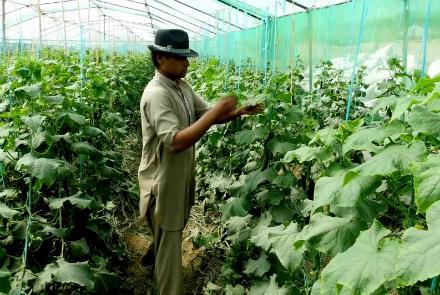An Afghan businessman is harvesting up to 1,400kg of cucumbers every two days after building a massive greenhouse that covers five acres of land in Paghman district in Kabul province.
The farmer, Sallahuddin, said he has made inroads into the market and is doing well but that with some government support he could expand his operation.
Greenhouse cultivation has started taking off in the country in the past few years. According to Sallahuddin, he can earn up to $295 USD every two days.
“Our products sell well and even supermarkets are selling our cucumbers and we get a good income too but in some instances the price drops and then we face losses,” said Sallahuddin.
Despite being a new concept in Afghanistan, greenhouse farming is popular around the world and has in some instances proven to be more profitable than traditional farming.
Another greenhouse farmer in Afghanistan, Kheyal Mohammad, said government needs to help promote greenhouse farming in the country in order to help boost the income of farmers and also to prevent a shortage of fresh vegetables during winter.
“Government must help with greenhouse farming and support investment in greenhouse agriculture because it is very important, we could become self-sufficient in domestic produce,” said Mohammad.
Meanwhile the Ministry of Agriculture, Irrigation, and Livestock (MAIL) said this year more than 2,600 greenhouses will be built in different parts of the country, of which 1,200 will be run by women.
“We have broad programs in the agriculture sector in order to encourage the private sector to invest in the agriculture sector,” Lotfullah Rashid, a spokesman for MAIL said.
Based on statistics from MAIL at the moment around 5,000 greenhouses exist in the country – of which 1,650 are large.
The ministry said that Farah province is the leading province in greenhouse agriculture and currently many of the vegetables grown here are exported.


